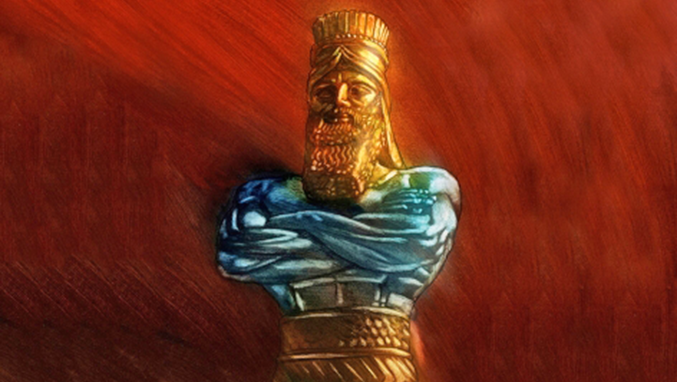Nebuchadnezzar II (/ˌnɛbjʊkədˈnɛzər/), also Nebuchadrezzar II[a] (Babylonian cuneiform: Nabû-kudurri-uṣur, meaning “O god Nabu, preserve/defend my firstborn son”; Biblical Hebrew: נְבוּכַדְרֶאצַּר – Nəḇūḵaḏreʾṣṣar[b] or נְבוּכַדְנֶאצַּר – Nəḇūḵaḏneʾṣṣar;[c] Biblical Aramaic: נְבוּכַדְנֶצַּר – Nəḇūḵaḏneṣṣar[d]), king of Babylon c. 605 BC – c. 562 BC, was the longest-reigning and most powerful monarch of the Neo-Babylonian Empire.[2][3]
His father Nabopolassar was an official of the Neo-Assyrian Empire who rebelled in 626 BC and established himself as the king of Babylon.[4][5] Nebuchadnezzar ascended the throne in 605 BC and subsequently fought several campaigns in the West, where Egypt was trying to organize a coalition against him. His conquest of Judah is described in the Bible’s Books of Kings, Books of Chronicles and Book of Jeremiah.[6] His capital, Babylon, is the largest archaeological site in the Middle East.[7]
Nebuchadnezzar is identified in the Bible as the king responsible for destroying Solomon’s Temple and initiating the Babylonian captivity, and is a significant character in the Book of Daniel.
Wikipedia definition









